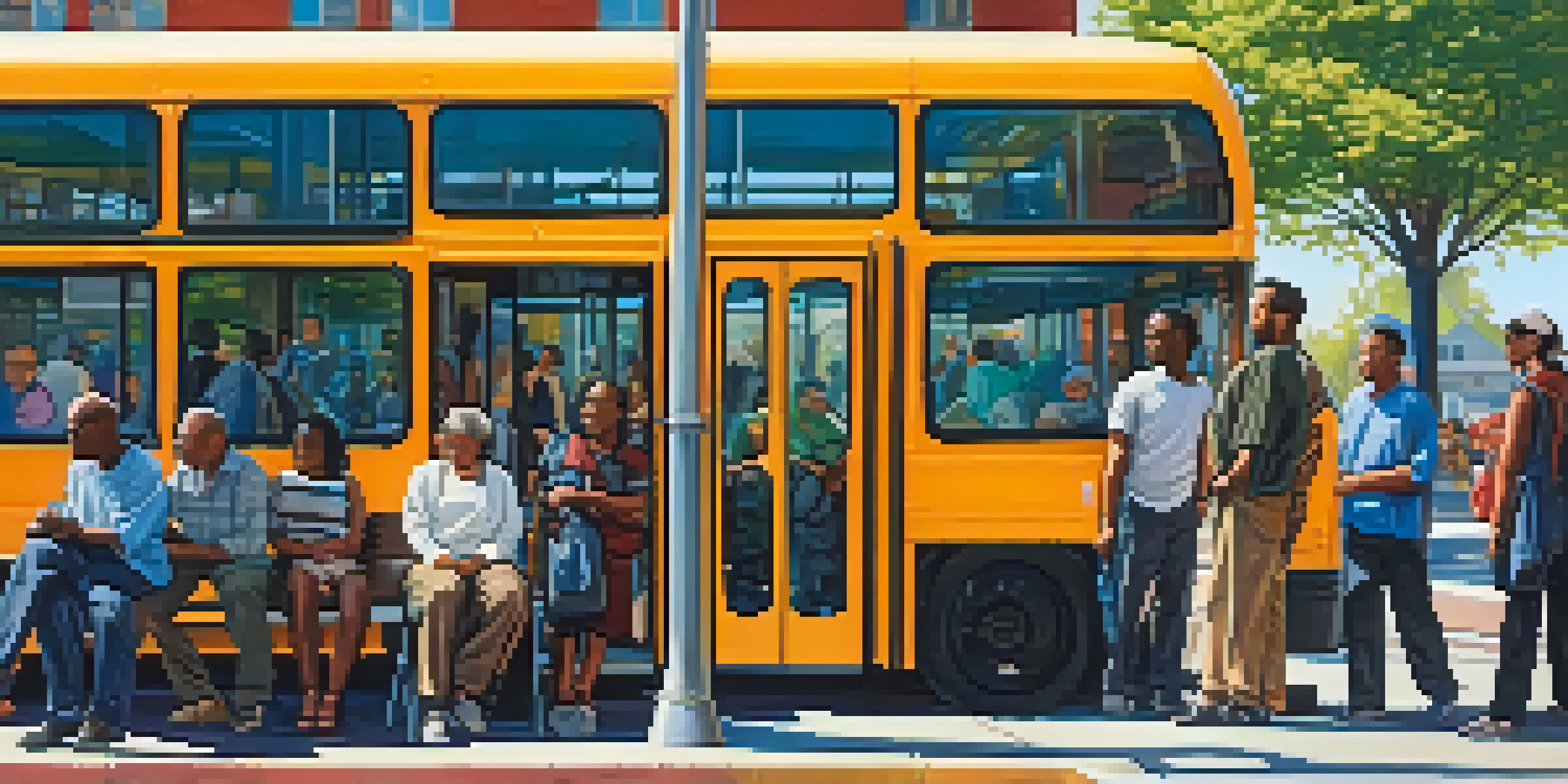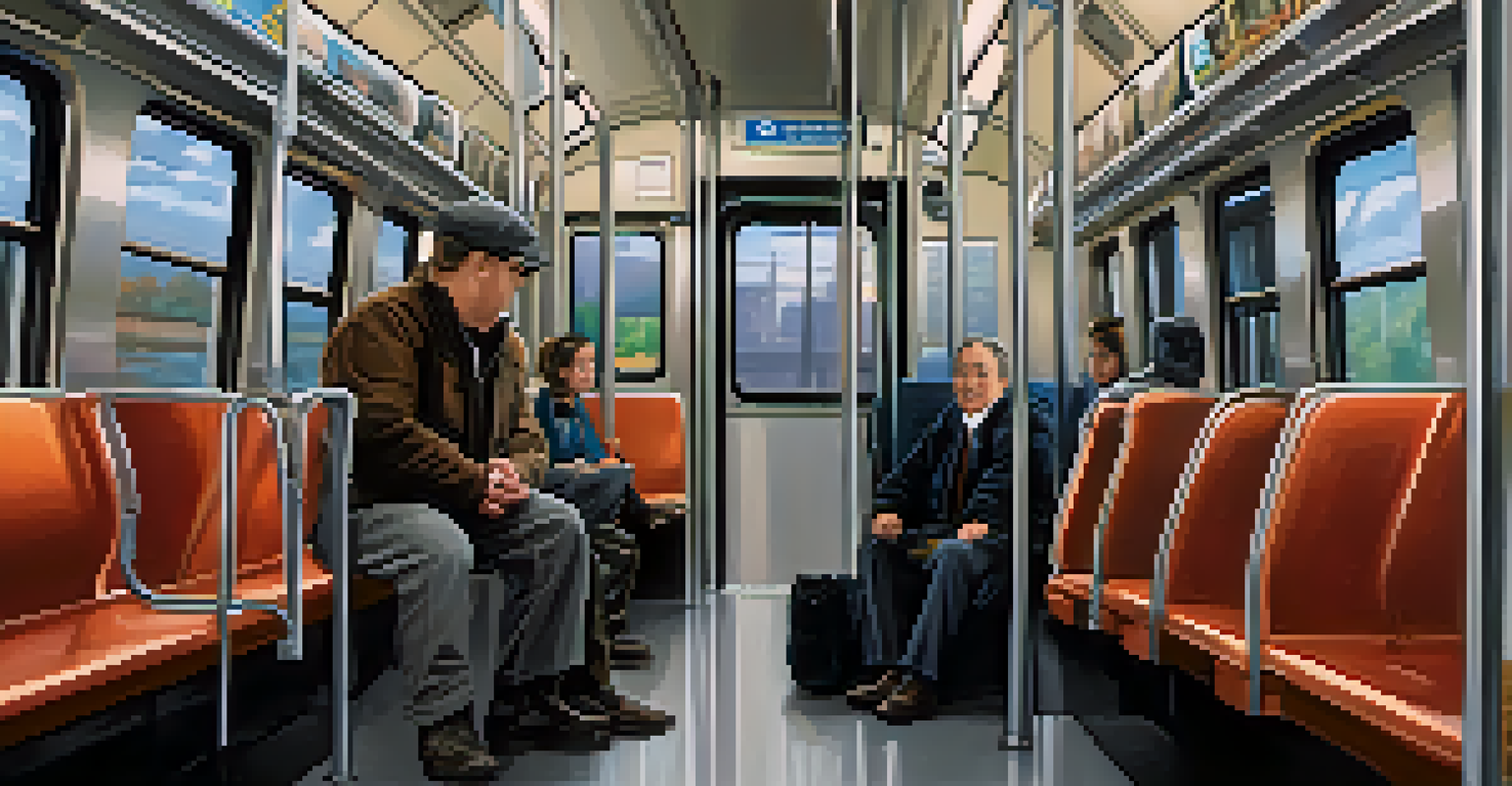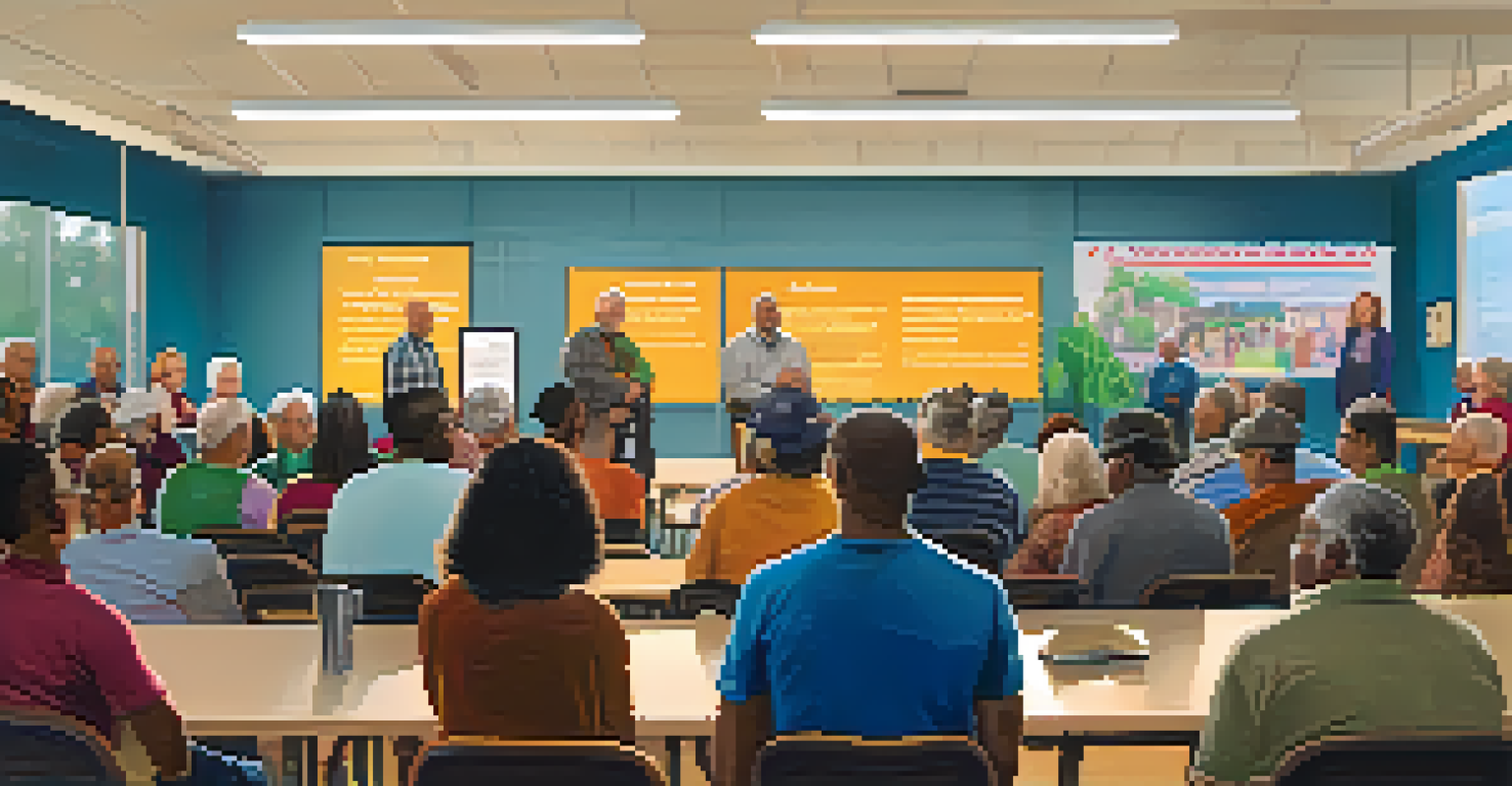Public Transit Accessibility: Challenges in New Jersey

Understanding Public Transit Accessibility in NJ
Public transit accessibility refers to the ease with which individuals can use public transportation systems. In New Jersey, this includes buses, trains, and light rail services that cater to a diverse population. Accessibility is crucial for ensuring that everyone, including those with disabilities, can travel independently and confidently.
Public transportation is a lifeline for many, and accessibility should be at the forefront of our planning efforts.
New Jersey's public transit system aims to provide reliable service, but there are inherent challenges that often hinder accessibility. These challenges can range from physical barriers, like lack of elevators at stations, to systemic issues, such as insufficient training for staff on assisting passengers with disabilities. Understanding these challenges is the first step in addressing them effectively.
As New Jersey continues to grow, the demand for accessible public transit is more pressing than ever. Recognizing the importance of equal access helps in creating a more inclusive environment for all residents. This article will delve into the various obstacles and potential solutions associated with public transit accessibility in the state.
Physical Barriers: A Major Hurdle
One of the most significant challenges facing public transit accessibility in New Jersey is physical barriers. Many train stations and bus stops lack essential features like ramps, elevators, and tactile paving, making it difficult for individuals with mobility impairments to navigate. These barriers can deter people from using public transit altogether.

For instance, imagine a person who uses a wheelchair and wants to visit a friend in another city. If the train station lacks an accessible entrance, that journey becomes not just inconvenient, but nearly impossible. Such scenarios highlight the urgent need for infrastructure improvements to accommodate everyone.
Addressing Physical Barriers
Improving infrastructure like ramps and elevators is essential for ensuring all individuals, including those with mobility impairments, can use public transit.
Addressing these physical barriers requires coordinated efforts from state and local governments, as well as transit authorities. Investing in accessible infrastructure is not just a matter of compliance with regulations; it’s about fostering a community where all residents can participate fully in everyday activities.
Service Availability and Scheduling Issues
Another challenge in public transit accessibility is the availability and scheduling of services. Many transit routes may not operate during off-peak hours, making it difficult for workers with non-traditional hours to rely on public transportation. For those who need accessible transit options, limited service can be particularly frustrating.
The real measure of our society can be found in how we treat the most vulnerable among us.
Consider a shift worker who finishes late at night. If the last accessible bus has already departed, they may find themselves stranded or forced to resort to expensive alternatives like rideshares. This lack of reliable service can lead to increased isolation and decreased employment opportunities for individuals with disabilities.
To improve accessibility, transit authorities need to consider expanding service hours and implementing flexible scheduling. By taking into account the needs of all users, including those with disabilities, public transit can become a more viable option for everyone.
Training and Awareness Among Transit Staff
Training and awareness among transit staff play a crucial role in ensuring public transit is accessible. Unfortunately, many employees lack the necessary training to assist passengers with disabilities effectively. This gap can result in frustrating experiences for those who need extra help navigating the system.
Imagine a new bus driver who is not trained on how to assist a visually impaired passenger. This lack of knowledge can lead to a poor experience for the passenger and may discourage them from using public transit in the future. Comprehensive training programs are essential to empower staff to provide the assistance that all passengers deserve.
Enhancing Service Availability
Expanding service hours and flexible scheduling can significantly improve public transit accessibility for workers with non-traditional hours.
By prioritizing staff training and promoting awareness of diverse needs, transit authorities can foster a culture of inclusivity. This not only enhances the overall travel experience but also builds trust within the community, encouraging more people to utilize public transportation.
Funding and Budget Constraints
Funding and budget constraints pose significant challenges to improving public transit accessibility in New Jersey. Many transit authorities operate on tight budgets, which can restrict their ability to make necessary upgrades or enhancements. This limitation can stall crucial projects that would otherwise make public transit more accessible.
For example, implementing new technology for better accessibility, such as real-time updates for the visually impaired, requires financial resources that may not be readily available. Consequently, these innovations often take a backseat to more immediate transportation needs, leaving many passengers underserved.
Advocating for increased funding and strategic budgeting is essential for addressing these accessibility issues. By prioritizing investment in public transit infrastructure, authorities can ensure that accessibility improvements are not just a dream but a tangible reality for all New Jersey residents.
Community Involvement: A Path Forward
Community involvement is vital in overcoming the challenges of public transit accessibility. Engaging with individuals who rely on public transportation can provide valuable insights into the specific barriers they face. This grassroots approach can lead to more effective solutions tailored to the community's needs.
For instance, holding community forums or focus groups allows residents to voice their concerns and suggest improvements. When transit authorities listen to the community, they can develop programs and services that better cater to everyone, especially those with disabilities. This collaborative effort can foster a sense of ownership and accountability.
Community Engagement is Key
Involving community members in transit planning can lead to tailored solutions that address the specific accessibility challenges they face.
By actively involving community members in the planning and implementation processes, public transit systems can transform into more inclusive and accessible services. This not only benefits those with disabilities but enhances public transportation for all users.
Technology and Innovations in Accessibility
Technology plays an increasingly important role in enhancing public transit accessibility. Innovative solutions, such as mobile apps that provide real-time updates on accessible routes and services, can empower users to plan their journeys more effectively. Such advancements can significantly improve the travel experience for individuals with disabilities.
Imagine a smartphone app that not only shows bus schedules but also indicates which buses are wheelchair accessible. This type of technology can alleviate anxiety for users who may otherwise be unsure about their travel options. By leveraging technology, public transit systems can better meet the needs of all passengers.

However, it’s essential to ensure that technology itself is accessible. This means designing apps and websites that are user-friendly for individuals with various disabilities. Investing in accessible technology can lead to a more inclusive transit experience and encourage greater usage among all community members.
Future Directions for Public Transit Accessibility in NJ
Looking ahead, the future of public transit accessibility in New Jersey depends on collaborative efforts across various sectors. Stakeholders, including government officials, transit authorities, and community organizations, must work together to create a roadmap for improvement. This unified approach can drive meaningful changes in the accessibility landscape.
As public awareness of accessibility issues grows, there is potential for increased advocacy and support for these initiatives. Engaging the public in discussions about transit accessibility can help elevate the importance of this issue, leading to more robust policies and funding opportunities.
Ultimately, by prioritizing accessibility in public transit planning and implementation, New Jersey can pave the way for a more inclusive and equitable transportation system. This commitment will not only benefit individuals with disabilities but will enhance the quality of life for all residents.